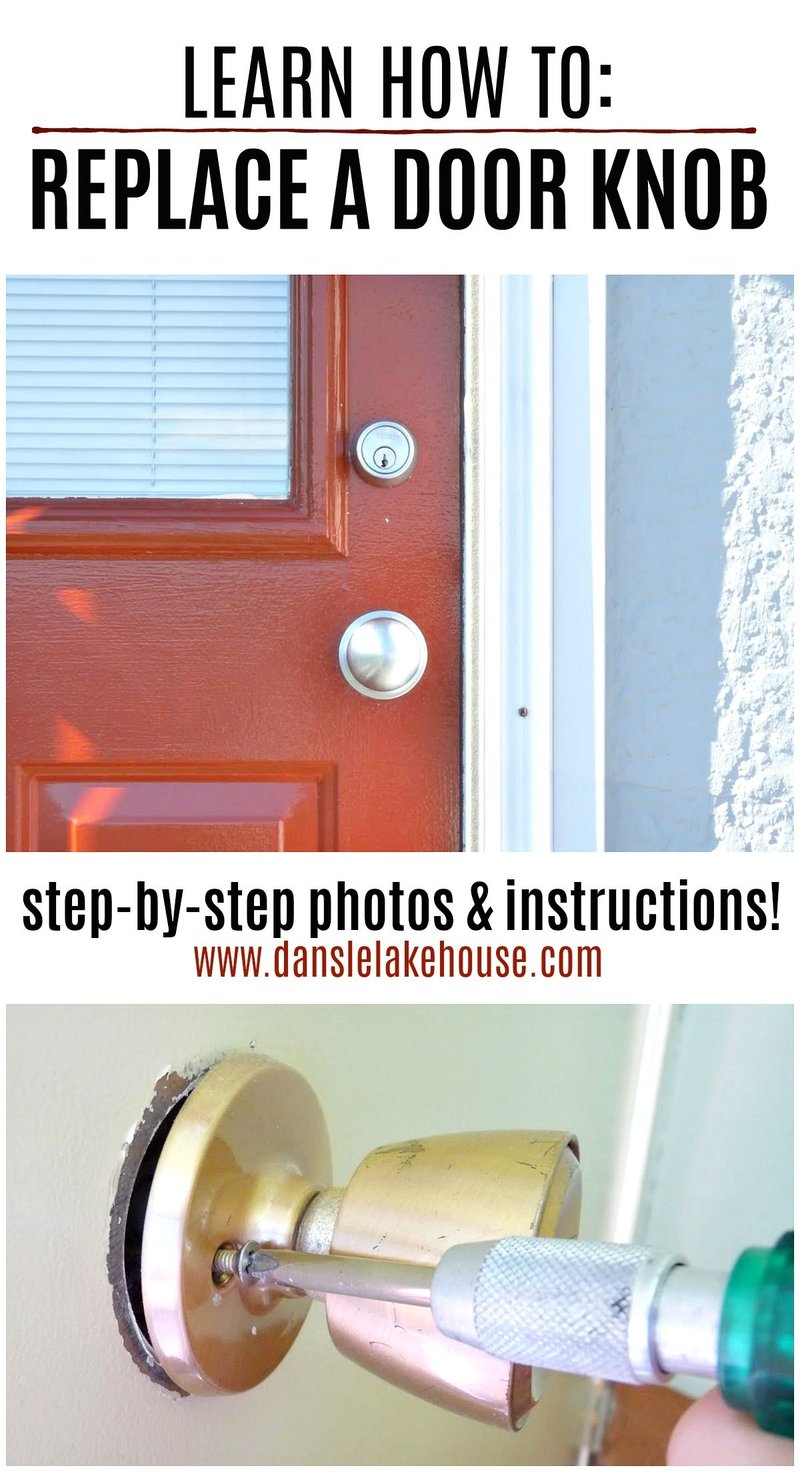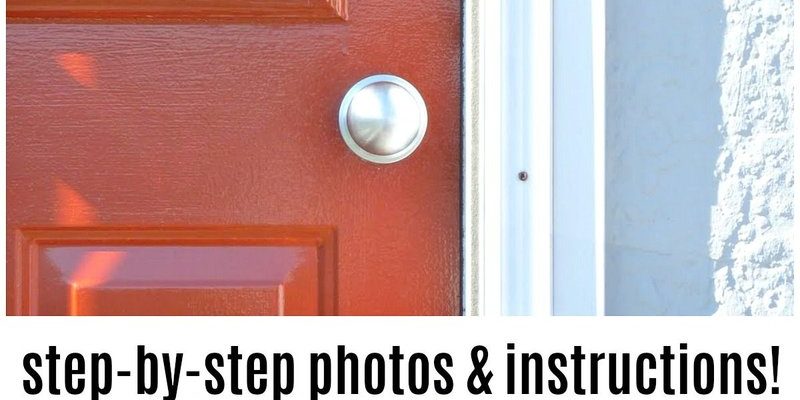
Honestly, swapping out a passage knob—whether it’s from Kwikset, Schlage, or another big brand—is a lot like changing a lightbulb: the first time might feel tricky, but once you’ve done it once, you’ll wonder why you ever hesitated. Whether your side door leads to a garage, mudroom, or backyard, a new knob can make the whole space feel more secure and fresh. You might want to do this if your current knob looks worn out, feels loose, or doesn’t match your taste—or maybe you’re re-keying for security and need a matching hardware set.
Let me explain how you can replace that passage knob step by step. I’ll break everything down so even if you’ve never held a screwdriver before, you’ll be able to update that side-door knob with confidence.
What You’ll Need Before You Start
Before you dive in, it helps to have all your supplies ready. Trust me, running back and forth for missing tools can turn a quick job into an afternoon project. Here’s what you’ll want at your side:
- A new passage knob (make sure it fits exterior doors—most are standard, but check the packaging for “passage” or “hall/closet”)
- Screwdriver (Phillips or flathead depending on your screws—most new knobs use Phillips)
- Tape measure (to check backset and hole size if the new hardware doesn’t seem to fit right)
- Needle-nose pliers (handy for tight screws or old latch plates)
- Optional: Power drill for stubborn screws, extra wood screws if anything strips, and a flashlight if your side door is in a dark corner
You might be wondering what “passage knob” actually means. It’s the kind of door knob that doesn’t lock—used for rooms or doors where privacy isn’t needed. On an exterior side door, you probably have a separate deadbolt for security, while the knob just operates the latch. Most big brands like Schlage, Kwikset, Defiant, and Yale use similar sizes, so you don’t typically need to drill new holes.
How to Remove the Old Passage Knob
Here’s the thing about old passage knobs—they look complicated, but they come apart in just a few steps. Most knobs are attached by two screws on the interior side. Let’s walk through it.
- Locate the Screws: Open the door so you have room to work. Look for two screws on the side of the knob facing indoors. Sometimes decorative covers hide them—if so, gently pry those off with your fingers or a flathead screwdriver.
- Unscrew the Knob: Use your screwdriver to back out the screws. Set them aside in a cup or pocket—if you drop them, they love to roll under the fridge (don’t ask me how I know). The interior knob should come loose right away.
- Remove Both Sides of the Knob: Once the screws come out, wiggle both sides of the knob free from the door. If it sticks, try turning the knob as you pull.
- Take Out the Latch: Now, look at the edge of the door. Two more screws hold the latch in place. Remove those, and slide the latch right out.
If your side door’s knob feels extra stubborn, check for hidden set screws or pins under the knob itself—sometimes you need to push or turn a tiny button to separate the levers.
Don’t worry if you see some old dust or paint flakes inside the hole. That’s normal, especially on outdoor doors that see a lot of weather.
Choosing the Right Replacement Passage Knob
Not all passage knobs are created equal, especially for exterior doors. Here’s what makes the difference and how to make sure you pick the right one.
First, check the “backset”—that’s the distance from the center of the knob hole to the edge of the door. Most homes use either a 2-3/8 inch or 2-3/4 inch backset. Most modern passage knobs let you adjust for either, but if your door is older, it’s worth grabbing a tape measure. If you’re reusing your deadbolt, try to match finishes (satin nickel, brass, matte black, etc.) so your hardware looks intentional rather than patchwork.
- Universal vs. Brand-Specific Knobs: Most passage knobs are “universal” and will fit any standard exterior door. If you’re loyal to a brand—maybe all your hardware is Schlage or Kwikset—it’s fine to choose theirs for a perfect finish match.
- Function & Locking: Remember, passage knobs don’t lock. If you want your side door knob to lock, you need a privacy knob or to add a deadbolt.
- Weather Resistance: For exterior side doors, pick a knob with a weather-resistant finish. That’ll stop corrosion, especially if rain gets blown in.
If you’re in the hardware aisle feeling lost, just snap a pic of your old knob and the door edge—staff can usually help you find a perfect fit. Or, if you’re shopping online, search for “exterior passage knob set” and double-check the specs.
Installing the New Passage Knob
Now comes the satisfying part—putting your new knob in place. Take it slow, and you’ll have it done in under 20 minutes.
- Install the New Latch: Slide the latch into the hole on the edge of the door. Make sure the beveled side faces the way the door closes. Use your screwdriver to attach it with the two little screws.
- Fit the Knob Halves Together: Line up the exterior and interior knobs so the posts slide through the latch. Sometimes you have to wiggle a bit—don’t force it, just adjust until things sit flush.
- Screw It Together: Once the knobs are aligned, thread the long screws through the interior side. Tighten them evenly. Not too tight—you want the knob to turn smoothly, not grind.
- Test Everything: Close the door and check that the latch catches and releases easily. If anything feels stuck, loosen the screws slightly and try again.
If your new passage knob doesn’t turn easily or the latch won’t “catch,” don’t panic. Double-check that the latch is facing the right way and that the strike plate on the door frame lines up.
If you reused the old strike plate, sometimes cleaning or re-seating it helps the latch click into place more smoothly.
Troubleshooting Common Installation Problems
Even with clear instructions, a few common things can throw you off. Here’s what people get stuck on—and how to smooth things out.
Knob Feels Loose or Wobbly
- Check if the mounting screws are tight and properly lined up. If the knob was over-tightened, loosen the screws just a hair and try again.
- If your door is older, the screw holes might be stripped. A wood filler or a slightly longer screw can fix this.
Latch Doesn’t Catch in the Strike Plate
- Make sure the latch and strike plate line up. You might need to adjust the strike plate slightly—just unscrew and move it up or down as needed.
- If the door sags, lift it while closing to test if it’s a hinge problem instead.
Knob Won’t Turn or Feels Stuck
- This usually happens when the posts aren’t lined up properly through the latch. Take both sides off, reset, and align again.
- Old paint or debris can block movement—use a brush or compressed air to clear out the holes before re-installing.
Don’t force anything—hardware should fit together smoothly. If you hit a stubborn spot, step back, take a breath, and check the instructions again.
Comparing Passage Knobs: Universal vs. Brand-Specific
You might be choosing between a universal replacement set and something more brand-specific—here’s what actually matters.
Universal passage knobs are designed to fit any standard door thickness and backset. They’re great if you want a quick swap, and they’re usually cheaper. Most home improvement stores have a wall of these—Schlage, Kwikset, Yale, Defiant—each claiming “universal” fit. Honestly, nine times out of ten, a universal set will work just fine.
Brand-specific knobs are usually for when you want the finish, shape, or feel to match exactly—especially if you have “designer” hardware elsewhere in the house. Some brands have subtle differences in latch thickness or screw spacing, but this mostly matters for older homes or unique doors.
If your side door is exposed to the weather or heavy use (think: kids, muddy boots, groceries), go for a sturdy, weather-rated option. Stainless steel or solid brass can take a beating. It’s worth a couple extra bucks for peace of mind.
How Exterior Passage Knobs Work—And Why It Matters
It’s easy to think a door knob is just a handle, but there’s a bit more going on under the surface. A passage knob uses a simple spindle that connects both sides of the knob through the latch assembly. When you twist the knob, it pulls the latch back so the door opens.
On an exterior side door, the passage knob is mostly for convenience, since the actual locking comes from a deadbolt (which you probably operate with a key or keypad). Still, you want a solid, smooth-turning knob because it sees a lot of use—think about every trip to the trash, letting the dog out, or carrying in groceries. A rattly, cheap knob can fail after a season or two.
When you replace this knob, you’re improving both function and curb appeal. A new knob can instantly make an old door look fresher and feel more solid. Plus, if you’re matching the hardware to the rest of your house, you’re creating a sense of intention and care—even in the little details.
Maintaining Your New Passage Knob
Once you’ve installed your new passage knob, you might think you’re done for good. Honestly, these knobs are low maintenance, but there are a few things you can do to keep everything working smoothly for years to come.
- Check Screws Periodically: With regular use, screws can loosen over time. Every few months, take a moment to tighten them if the knob starts to feel wobbly.
- Clean Gently: Occasionally wipe the knob and latch with a damp cloth. For tougher grime, use a mild soap (no harsh chemicals—those can damage the finish).
- Lubricate if Sticky: If the knob starts to feel stiff, a shot of silicone spray or graphite lube in the latch can help. Avoid WD-40 or anything oily—it’ll attract dust.
- Monitor for Rust or Corrosion: Especially on exterior doors, check for signs of rust. Most modern passage knobs from brands like Kwikset and Schlage have weather-resistant finishes, but if you spot surface rust, a little steel wool and polish can nip it in the bud.
If you ever need to reset or re-key the knob—some brands offer smart or keyless options—you’ll find the instructions in the box or online. For most passage knobs, though, maintenance is a once-in-a-blue-moon thing.
Wrapping Up: Enjoying a Sturdy, Stylish Side Door
Replacing a passage knob on your exterior side door doesn’t need to be a big, messy project. With a few basic tools and the right instructions, you can have a new knob installed in less time than it takes to watch a sitcom. The payoff? Opening your side door feels smoother and more secure, and your home gets a tiny but noticeable upgrade.
Take a moment to enjoy that satisfying click and solid feel—it’s a small change, but it makes coming and going just a bit nicer every day. Whether you’ve chosen a universal passage knob or stuck with a favorite brand like Schlage or Kwikset, now you know how to handle this simple DIY like a pro. And if you ever need to swap another knob, you’ll already have the confidence and know-how to do it right.
